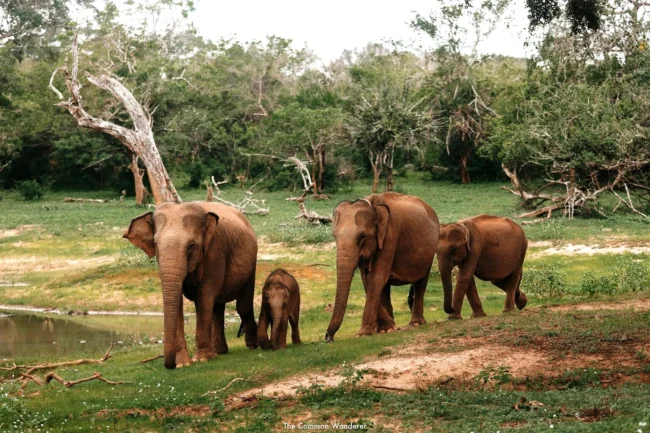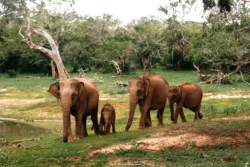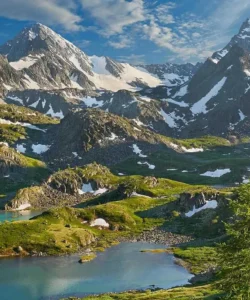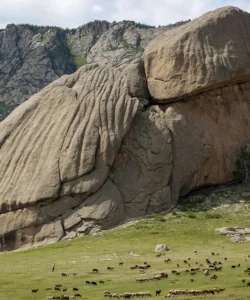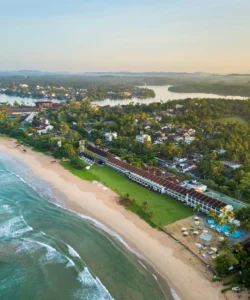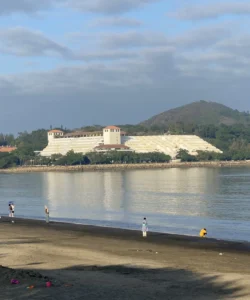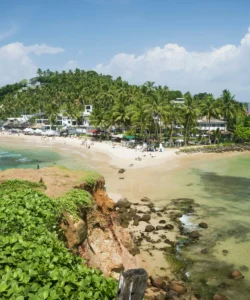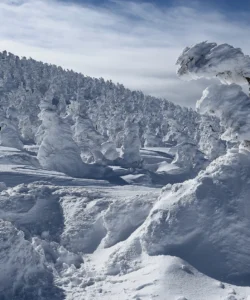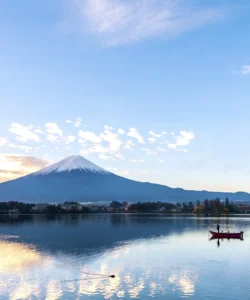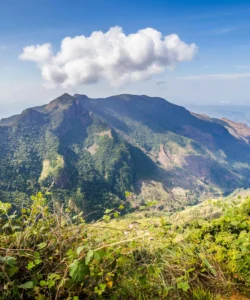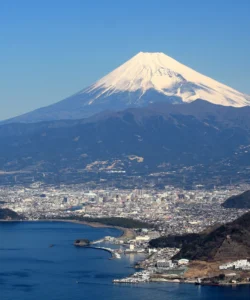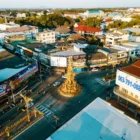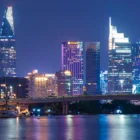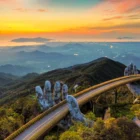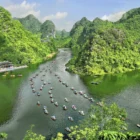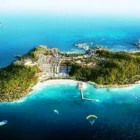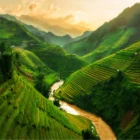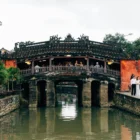Yala National Park is Sri Lanka’s most famous and second-largest national park, located in the southeast of the island, bordering the Indian Ocean. Renowned for its incredibly high density of leopards, diverse ecosystems, and rich array of wildlife, Yala offers an unparalleled safari experience, allowing visitors to witness a vibrant tapestry of animals in their natural habitat. It’s a land of thorny scrub, open plains, rocky outcrops, and lagoons, creating a wild and captivating landscape.
Name: Yala National Park (යාල ජාතික වනෝද්යානය)
Address: Yala, Sri Lanka. The most common entrance is Palatupana Gate, near Tissamaharama and Kirinda.
How to get there:
Reaching Yala National Park involves traveling to the southeastern coast of Sri Lanka:
- From Colombo to Tissamaharama/Yala (Most Common Gateway Town):
* Bus: Take a bus from Colombo’s Bastian Mawatha Bus Terminal to Tissamaharama (Tissa). The journey can take 6-7 hours. From Tissa, arrange a safari jeep.
* Train + Bus: Take a train from Colombo to Matara (4-5 hours), then a local bus or taxi to Tissamaharama (1-1.5 hours).
* Taxi/Private Car: Available from Colombo, taking about 4-5 hours.
* Domestic Flight: Smaller domestic flights might operate from Colombo to Mattala Rajapaksa International Airport (HRI), which is closer to Yala, though flight frequency varies. From HRI, take a taxi to Tissamaharama/Yala. - Within Yala/Safari Entry:
- Once in Tissamaharama or nearby towns like Kirinda, you’ll need to arrange a safari jeep and a licensed guide/driver. Park entry fees are separate from jeep hire fees.
- Safaris typically depart very early in the morning (around 5:00 AM) or in the afternoon (around 1:00 PM) to maximize wildlife sightings.
Operating Hours and Entrance Fee:
- Operating Hours: Yala National Park is generally open daily from 6:00 AM to 6:00 PM. However, specific zones within the park may be temporarily closed for conservation or maintenance, and the park sometimes undergoes full closures for a month (often September) for a “rest period,” so it’s crucial to check ahead.
- Entrance Fee: For foreign visitors, there is a per-person entrance fee (which varies, but is typically around $20-30 USD plus taxes and service charges, subject to change). There are also separate fees for the safari jeep (per vehicle, not per person) and a mandatory tracker from the park.
Landscape and Architecture:
Yala National Park’s “architecture” is largely its diverse natural ecosystems, shaped by geological and climatic forces:
- Diverse Ecosystems: The park comprises a mosaic of habitats:
- Thorn Scrub Jungles: The most dominant vegetation, providing dense cover for animals.
- Open Grassy Plains (Patanas): Patches of open grasslands, often near water sources, ideal for grazing animals and leopard sightings.
- Lagoons and Waterholes: Numerous natural and artificial water bodies (tanks or wewas) are crucial for wildlife, attracting elephants, crocodiles, and water birds.
- Rocky Outcrops and Caves: Large granite boulders and rock formations are scattered throughout, providing excellent vantage points for leopards.
- Coastal Belt: A narrow strip of sand dunes and beaches along the Indian Ocean, although access to some coastal areas might be restricted due to tsunami damage or conservation.
- Malangawa (Sacred Site): Within the park, there’s a small sacred site believed to be an ancient pilgrimage point, though not an architectural marvel in itself.
- Simple Safari Tracks: The park is crisscrossed by unpaved jeep tracks, allowing safari vehicles to traverse the landscape, creating the primary “infrastructure” for human access.
- Observation Towers (Limited): Some simple wooden observation towers might exist at certain waterholes, but they are not a dominant feature compared to other parks.
- Flora: Adapted to the arid environment, including dry evergreen forests, thorny shrubs, and grasses.
- Fauna (The Main Attraction): Yala is famous for its rich biodiversity, particularly its:
- Leopards (Panthera pardus kotiya): Yala boasts one of the highest leopard densities in the world, making it a premier spot for sightings.
- Elephants (Elephas maximus maximus): Large herds of Sri Lankan elephants are frequently seen.
- Sloth Bears (Melursus ursinus inornatus): An endemic subspecies, though elusive.
- Sri Lankan Axis Deer (Spotted Deer), Sambar Deer, Wild Boar, Water Buffalo, Mongoose, Jackals, Crocodiles (Marsh and Saltwater).
- Birds: Over 215 species of birds, including migratory waterfowl, peacocks, eagles, and hornbills.
What makes it famous:
Yala National Park is famous for:
- Leopard Density: It has one of the world’s highest densities of leopards, making it one of the best places globally to spot this elusive big cat.
- Diverse Wildlife Safari: Offers a comprehensive safari experience with a wide array of large mammals (elephants, sloth bears, deer, wild boar) and an incredible variety of birdlife.
- Beautiful and Varied Landscape: The mix of thorny scrub, open plains, rocky outcrops, and coastal areas creates a visually captivating and dynamic safari environment.
- Coastal Proximity: Its unique location bordering the Indian Ocean, with stretches of sand dunes and historical tsunami impact areas, adds a distinct element to the safari experience.
- Photographic Opportunities: The abundance of wildlife and dramatic landscapes provides exceptional opportunities for wildlife photography.
- Important Conservation Area: It plays a vital role in protecting Sri Lanka’s unique biodiversity, including several endemic species.
Differences from some other wonders:
Yala National Park distinguishes itself from other national parks and wildlife sanctuaries in several key ways:
- Leopard Focus: While many parks have big cats, Yala’s specific reputation for exceptionally high leopard density and relatively consistent sightings makes it a specialized destination for leopard enthusiasts. Other parks might be famous for lions (Serengeti) or tigers (Ranthambore), but Yala is the leopard king.
- Unique Combination of Arid and Coastal Ecosystems: Unlike purely savanna parks (e.g., in East Africa) or dense rainforests, Yala features a distinct blend of arid thorn scrub jungle, open plains, and a coastal beach/dune environment. This provides a unique ecological variety within a single park.
- Jeep Safari as Primary Experience: The park is almost exclusively explored via guided jeep safaris. Unlike parks with extensive hiking trails (e.g., Seoraksan) or self-driving options (e.g., Kruger), the guided jeep experience is paramount, ensuring safety and maximizing wildlife encounters.
- Tsunami Impact Narrative: The park still bears subtle environmental scars and ongoing recovery from the 2004 Indian Ocean Tsunami, which adds a unique, albeit poignant, modern historical layer to its natural landscape, influencing some areas (like coastal access).
- Sri Lankan Endemic Species: It provides habitat for unique endemic Sri Lankan subspecies like the Sri Lankan leopard, elephant, and sloth bear, differentiating its biodiversity from mainland Asian or African parks.
- Less “Built” Infrastructure: Compared to some heavily developed national parks with lodges or extensive visitor centers within the park, Yala maintains a more rugged, less intrusive infrastructure inside its core safari zones, keeping the focus squarely on the wilderness experience.
In essence, Yala National Park is a thrilling and essential wonder, a dynamic ecosystem that offers an unparalleled opportunity to connect with Sri Lanka’s rich and diverse wildlife, particularly its magnificent leopards, against a backdrop of raw and captivating natural beauty.
